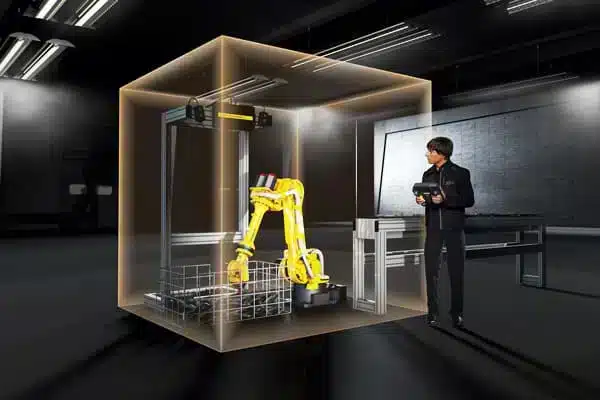Last edit: 11/05/2025

[ISO 10218-1: 2025] 5.7.1 General. A means to limit the motion of the robot to be less than the maximum space shall be provided.
This function becomes necessary when the robot’s operating space is larger than the protected space, i.e. where there is a risk that the robot might bump into something.
The robot must not be able to move beyond the position of the limiting devices, or it must retract safely the moment it reaches them.
The limiting devices must also be able to stop the robot within the protected space under the following conditions
1. if it is moving at maximum transportable weight;
2. if it is moving at maximum speed
3. if it is in the most unfavourable position
4. if it is taking the most unfavourable path
Limiting devices must be designed, tested and determined in accordance with ISO 13849-1 or IEC 62061 or IEC 61508.
The devices in question may be mechanical, electromechanical or executed by software.
With the new 2025 Edition, the presence of this function depends upon the Robot Class.
limiting space mechanically
Basically, when no certified software is provided to limit the robot’s handling space, means must be provided to install mechanical blocks or interlocks on the robot’s axes, more specifically at least on the three axes with the largest handling radius.
Mechanical blocks on the axes ‘physically’ and ‘brutally’ restrict the robot’s handling space.
During normal operation, the robot will not hit the mechanical blocks, but this will happen when a failure occurs.
Limiting space electromechanically
This method consists of installing interlocks on the robot’s axes.
When one of the interlocks is activated, it will command the robot to stop.
Obviously, these devices must be operated by safety and their safety system must be implemented in accordance with Section 5.4.
Limiting Space with Certified Software
One method of limiting the robot’s space is to use certified safety software.
This software defines geometric shapes or planes that:
- Do not allow the robot to leave the programmed areas or
- Do not allow the robot to enter the programmed areas
This method is the preferred solution for delimiting a “confined space” of the robot.
If the robot should stop in one of the areas programmed by the software, it must necessarily move at reduced speed while in this area.